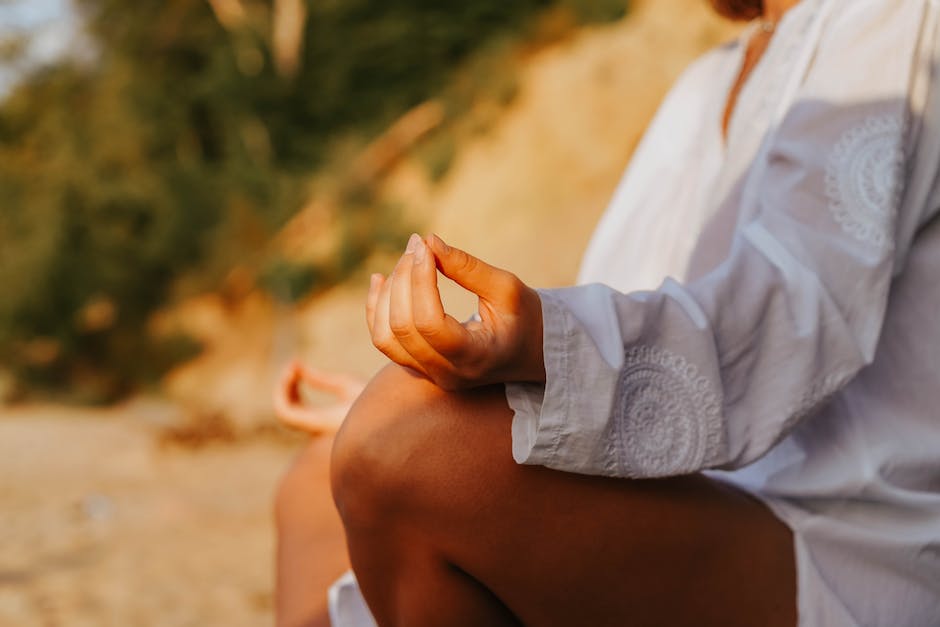The ancient art of Reiki, an energy healing method deeply embedded in our historical and cultural fabric, has the power to promote healing and well-being. At the crux of this alternative medicine practice lies the concept of “intention,” an essential element that can significantly magnify the efficacy of Reiki healing.
This article endeavors to give an in-depth understanding of Reiki, highlighting the role of intentions in its practice. Through a step-by-step procedure, it will guide individuals in setting effective Reiki intentions, evaluating their potential benefits, and dismissing common misconceptions to reveal the true potential of this age-old healing practice.
Understanding Reiki
Understanding Reiki: A Look at its Foundations
Reiki, which originated in Japan in the late 19th century, is an energy healing technique based on the principle of “universal life energy.” This form of alternative medicine was developed by a Buddhist monk named Mikao Usui following a mystical experience on Mount Kurama. Essentially, the Reiki practice involves the practitioner transferring universal energy through the palms of their hands and into the patient’s body to encourage healing and balance.
Unraveling the Concept of Universal Life Energy
Central to the practice of Reiki is the belief in Ki or Chi — the life force energy. The concept of Ki is firmly rooted in Eastern mysticism and healing practices. This invisible energy pervades everything and maintains harmony within and around all living beings. Reiki therapy is centered around the concept of manipulating and channeling this energy to promote physical and emotional healing.
The Intentions of Reiki
In understanding Reiki intentions, it’s important to highlight that Reiki operates based on the intention of universal love and healing. Practitioners of Reiki set positive healing intentions during their sessions to direct the energy flow in ways that promote overall well-being and recovery. The main intention behind Reiki treatment is to harmonize the body’s energy, clear any blockages, and stimulate the body’s own healing mechanisms.
Understanding Energy Blockages in Reiki
Energy blockages are believed to cause or exacerbate illnesses and discomfort. Through the practice of Reiki, a practitioner can identify and clear these energy blockages. It is the intention to heal that allows the practitioner to channel the universal life energy, via their palms, to these areas of blockage, thereby facilitating the energy to flow freely through the body.
The Use of Symbols in Reiki
During Reiki sessions, practitioners often use symbols that are believed to help channel the universal life energy more effectively. These symbols are visual tools that help the practitioner focus their intention. Each symbol represents certain energy dynamics or healing functions. Incorporation of these symbols into the healing process is guided by the practitioner’s intention to balance and heal specific areas or issues.
Reiki: A Non-invasive Approach to Healing
One of the essential elements of understanding Reiki is recognizing it as a non-invasive practice. Unlike other healing techniques, Reiki doesn’t involve physical touch or manipulation. Instead, it works via the energy fields that encircle the body. This unique approach underscores the Reiki philosophy of respecting one’s body integrity and individuality. Because of this non-invasive nature, Reiki is often employed as a complementary therapy. It works in tandem with conventional treatments, promoting overall wellness and health.

The Role of Intentions in Reiki
Focusing on the Intentions in Reiki
Central to the practice of Reiki is the concept of intentions. Regardless of the particular Reiki form or level being utilized, establishing an intention is seen as fundamental. The intention refers to a thought, wish or desire that the Reiki practitioner intentionally sets before embarking on the healing journey.
Put simply, an intention is a driving purpose or aim that influences an action. In a Reiki context, such actions encompass aspects such as healing, personal growth or spiritual enlightenment. For example, a practitioner might establish an intention geared towards fostering physical health, emotional equilibrium, mental clarity or spiritual awakening.
The Power of Intentions in Reiki
Intentions in Reiki are not passive wishes or mere good thoughts; they’re a deliberate act that activates the healing power of Reiki energy. Setting an intention is process similar to programming a GPS to reach a particular destination. It directs the universal life energy to flow where it is most needed, be it for physical healing, emotional balancing, mental clarity, or spiritual enlightenment.
For example, if a practitioner is about to start a Reiki healing session for a client suffering from chronic back pain, they might set the intention: “May the Reiki energy flow to provide healing and relief for the back pain.”
Examples of Reiki Intentions
- Physical Healing: “May the Reiki energy flow where it is needed most for my physical healing.”
- Emotional Balance: “Through this Reiki session, may all my negative emotions be replaced with positivity and peace.”
- Mental Clarity: “May the universal energy clear my mind and help me focus better.”
- Spiritual Awakening: “May this Reiki healing session deepen my connection to my highest truth.”
Setting an intention does not guarantee that the hopeful outcome will manifest instantly, but it does create a focused and positive energy field to facilitate healing.
The Role and Practice of Intentions in Reiki
The practice of setting intentions during a Reiki session is a simple yet crucial process. It begins with grounding oneself via deep breathing techniques. Following this, the practitioner visualizes and clearly formulates the specific intention they wish to focus on. The final step involves invoking Reiki symbols to guide the flow of universal life energy, in harmony with the established intention.
In Reiki, intentions play a significant role in aligning thought energy with the universal energy, facilitating an optimized healing procedure and profound outcomes. Embodying a regular practice of setting positive healing intentions can profoundly effect life improvements in multiple domains.

Procedure to Set Reiki Intentions
Delving Deeper into Reiki Intentions
The Japanese healing practice of Reiki, translating to ‘universal life energy,’ significantly underscores the power of clear intentions. Intentions form the core of this energy healing technique, as they represent the focused will to instigate particular changes. The connection fostered between the mind and body via intention setting can provide impactful therapeutic benefits. When an intention with this magnitude of clarity is established, it proficiently directs the Reiki energy to areas of the body that need healing the most.
Procedure to Set Reiki Intentions
Taking time to set your intentions before a Reiki session can improve your experience and enhance the healing potential of the practice. Here is a general procedure to execute it effectively.
- Finding Clarity: Before you set your intention, it’s helpful to sit quietly and reflect on your current state of mind, body, and spirit. Be honest about what areas need healing or improvement. The clarity in your thought process forms the foundation for setting a meaningful intention.
- Setting the Intention: The intention shouldn’t be vague. Instead, it should be clear, concise and actionable. For instance, instead of saying “I want to feel better,” say “I am healing my anxiety.” This specific intention provides a precise direction for the Reiki energy.
- Visualization: Visualize your life post-intention fulfillment. This would help your subconscious mind understand what achievement of your intention would look like, reinforcing its manifestation during the Reiki session.
- Focus on the Intention: Lastly, focus on your intention while beginning your Reiki session. Maintain the concentration on your intention throughout the session as though it’s already happening. This strengthens the energy healing process.
Effective Methods for Establishing Reiki Intentions
Consider this: the secret to establishing efficient Reiki intentions lies in maintaining an optimistic attitude and a readiness to welcome this positive energy. It’s crucial to establish these intentions from a standpoint of love and to understand that healing sometimes necessitates time and patience. Have faith in the process and keep good hopes for the results. Once your Reiki procedure is over, it’s a good practice to keep reinforcing your intention throughout your day. This can be done through meditation, repetition of mantras, or just simply conscious thought. Such practice preserves the open energetic pathway and continues influencing the healing process post-Reiki session.

Benefits and Efficacy of Reiki Intentions
Grasping Reiki Intentions: Channelizing Energy For Healing and Wellness
Often, Reiki practitioners start their energy healing process by establishing an intention. Within the Reiki practice, an intention is a purposely made decision aimed to invite specific healing energy, focus the mind, and steer the healing process towards definite results.
Reiki intentions may vary from overall well-being to particular physical or emotional healing. The intentions can also be more encompassing, representing a desire for peace or spiritual growth. The establishment of these intentions is thought to activate the Reiki energy and guide it where it is most needed.
Empirical Evidence of the Efficacy of Reiki Intentions
There have been several scientific studies that have evaluated the efficacy of Reiki intentions by examining the outcomes of Reiki sessions. For instance, a peer-reviewed study published in the Journal of Alternative and Complementary Medicine found that Reiki could significantly decrease pain and anxiety in hospital patients. The practitioners in this study would set the intention for pain relief and anxiety reduction before the session, suggesting that these intentions played a role in the observed results.
Another research study published in the American Journal of Health-System Pharmacy found that patients who underwent Reiki saw improvements in symptoms from conditions such as stress, insomnia, nausea, and pain from cancer treatment. This further supports the belief that Reiki’s intentions can help guide and enhance the therapeutic outcome of the sessions.
Real-world Testimonies Supporting Reiki Intentions
Beyond the realm of scientific research, the efficacy of Reiki intentions can be noted through the testimonials of those who have received Reiki treatments. Many recipients report feeling a profound sense of calm, emotional balance, or relief from physical discomfort after sessions where specific intentions were set.
Practitioners also recount experiences of remarkable improvements in their clients’ conditions in response to focused intentions. These anecdotal testimonies provide insights into the potential benefits of Reiki intentions that scientific studies may not fully capture.
Reiki Energy Healing and the Role of Intentions
Reiki Energy healing practice is a complex process that holds two integral components: Reiki energy, and the intentions set by the practitioner. While it’s hard to separate the two, the effect of Reiki’s intentions on the healing process is clear. These intentions enhance focus, guide energy use with precision, and provide an essential contribution to the entire practice of Reiki, strengthening the healing process significantly.
Therefore, setting an intention in Reiki is not a mere initial step, but indeed a potent instrument enhancing the therapy’s effectiveness. No matter if you pursue Reiki for the scientific, therapeutic, or spiritual benefits, proper application of intention can pave a pathway to overall improved health and wellness.
Common Misconceptions about Reiki Intentions
Unraveling the Concept of Reiki Intentions
Reiki, originating from Japan as an energy healing tradition, is recognized for its unique practice of setting intentions. Despite adding focus in sessions for both the practitioner and recipient, the actual concept of these intentions is often misinterpreted. Many perceive Reiki intentions as an enigmatic force, but it’s crucial to clarify this misconception. The primary function of intentions in Reiki is to act as mental prompts, guiding practitioners in utilizing their mental, emotional, and physical energy towards achieving effective healing.
Misconception: Intentions Dictate Reiki Energy Flow
A common misconception about Reiki intentions is that they dictate or direct Reiki energy. However, the reality is more nuanced. The energy in Reiki is believed to be an intelligent life force that inherently knows where and how to heal, based on the recipient’s need at the time of treatment. The intentions set before or during a Reiki treatment are not to ‘command’ the energy but to set a personal focus and to open the gateway for this energy to manifest its healing.
Misconception: Intentions Must be Clear-cut
Another misconception revolves around the clarity of intentions. Many people believe that they need to have a very clear, specific intention before they undergo a Reiki session. While having a defined intention can indeed be beneficial, it’s not essential. It’s equally valid to approach a Reiki session with a broad intention such as wanting overall well-being, balance, or general relief from stress.
Significance of Individual Beliefs in Reiki
The role of individual belief and perspective in Reiki cannot be overstated. Reiki is a deeply personal practice wherein the receiver’s perspective and openness to the treatment can significantly influence the outcome. For example, a person who believes in the healing abilities of Reiki and approaches the treatment with positivity and openness is more likely to report experiencing beneficial effects, compared to someone skeptical or closed-off to the practice.
Tailoring Reiki Intentions
A significant aspect of setting Reiki intentions is the freedom and flexibility it offers to tailor the practice to individual needs and beliefs. For example, some people might concentrate on physical healing, while others focus on emotional or mental well-being. The process is personal and subjective. It’s recommended to follow one’s instinct or intuition when setting an intention, making the practice more meaningful.
Reiki Intentions and Non-Attachment to Outcomes
A vital component of Reiki intentions lies in understanding the importance of non-attachment to outcomes. When setting an intention, practitioners and receivers should be careful not to fixate on a specific result. The reason behind this is rooted in the guiding principles of Reiki that advocate for trust and surrender to the Reiki Energy, and allowing it to work in its manner and time frame. This approach leaves room for the manifestation of benefits that might be beyond our immediate recognition or understanding.

The journey into the realm of Reiki is deeply personal and transformative. It is not merely the application of ancient healing techniques but a conscious practice rooted in the power of intention. The role of setting intentions in Reiki cannot be overstated; it forms the basis of the healing process, validated by numerous experiences and scientific studies. However, in overcoming misconceptions and stereotypes, we enable a genuine understanding and appreciation of Reiki. Ultimately, this fosters a deeper personal connection to the energy, enhancing the healing potential, promoting balance, and paving the way for holistic well-being. The power to heal rests within us, and with Reiki intentions, we learn to tap into this unbounded potential.




